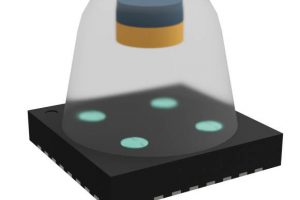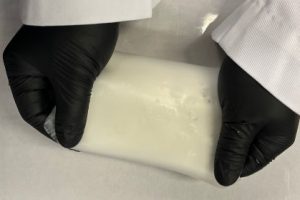Researchers in Illinois have added seven new molecules to the four usually found in DNA, expanding the palette for potential data storage applications. DNA contains four nucleotides: adenine, guanine, cytosine and thymine (aka A, G, C and T), which arrange into the famed double helix. The patterns they form store the code for making living organisms and has been known ...
Research
The latest electronics research news from within the industry and universities from around the world.
Passive radiative cooling improves high-end solar cells
Pusan National University in Korea is increasing the efficiency of solar cells by bouncing heat back into the sky. “Standing in the sun all day, solar cells often become very heated,” according to the university. “Over time, this degrades them and lowers their power-conversion efficiency. Integrating radiative coolers can solve this problem without energy consumption.” The Prusan cells are being ...
Flexible stretchy supercapacitors
The University of Surrey has created a flexible and stretchy supercapacitor “that can be easily integrated into footwear, clothing, and accessories”, it said. Building one involves transferring aligned carbon nanotube arrays from a silicon wafer over to a PDMS (polydimethylsiloxane) layer in which they are partly embedded. Polyaniline is then polymerised onto the surface of the nanotubes. In capacitors made from ...
More on: Melexis’ tactile sensor for robot finger tips
Aimed at robot hands and grippers, Tactaxis from Melexis is a soft tactile sensor prototype that outputs a measure of the 3D force vector acting on its surface. “This improves robots’ hands and grippers, making delicate operations such as fruit picking possible,” according to the Belgian company. Uniquely, it said, it’s gradiometric approach makes it virtually immune from stray magnetic ...
Sludge-like fluid might lead to grid-scale flow batteries
Flow batteries show promise for grid-scale storage as, like fuel cells, they decouple power output and energy storage when building a battery: the reactor is sized for power output and the surrounding tanks are sized for energy capacity. Given a low-cost working fluid and big tanks, they could store enormous amounts of energy. Seeking that low-cost fluid, MIT is proposing to ...
Intrinsic scales RRAM to 50nm
Intrinsic Semiconductor and its partner imec have scaled Intrinsic’s RRAM technology to 50nm. Intrinsic claims that, at 50nm, the technology demonstrates ‘excellent switching behaviour’. “We are delighted to have hit this critical milestone, confirming our theoretical analysis that the devices can be made with nanoscale dimensions,” says CEO Mark Dickinson, “ this means, at last, there will be a simple ...
Elastomer electrolyte to sort out lithium metal batteries?
Elastomer electrolytes might be the answer to safe lithium-metal batteries, according to researchers at the Georgia Institute of Technology. Batteries using lithium metal anodes rather than lithium ions promise high capacities, but a tendency to grow internal cell-shorting spike-like metal dendrites makes them a risky, or even unsafe, proposition if liquid electrolytes are used. Solid inorganic or polymer electrolytes can ...
Elektra Awards 2021 – University Research Readers’ Choice Award
Winner University of Bath This award acknowledges the impressive projects and showcases cutting-edge UK electronics research. The University of Bath team submitted a prototype that is a miniature camera held in a silicone ear-piece. The research project that captured the most interest and votes of Electronics Weekly readers is a project by GP Dr Nick Gompertz, working with a ...
Nexeon pulls in $80m towards silicon anodes for Li-ion cells
Oxfordshire-based silicon anode research company Nexeon has landed a $80m investment from a consortium including SKC, SJL Partners, BNW Investment and Kiwoom Private Equity. “SKC, a $5bn market cap company, is one of Korea’s leading advanced materials companies, with a strategic focus on rechargeable battery and semiconductor materials,” according to Nexeon. “Through this transaction, Nexeon enters into a strategic partnership ...
Carbon electrode leads to 500Wh/kg lithium-air battery
The Japanese National Institute for Materials Science (NIMS) and SoftBank have developed a 500Wh/kg lithium-air battery. “Despite their very high theoretical energy densities, only a small number of lithium-air batteries with high energy densities have actually been fabricated and evaluated,” according to NIMS. “This limited success is attributed to the fact that a large proportion by weight of lithium-air battery contains ...
 Electronics Weekly Electronics Design & Components Tech News
Electronics Weekly Electronics Design & Components Tech News









